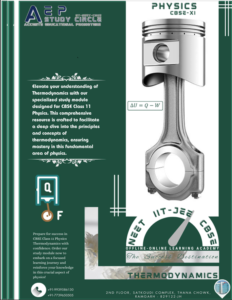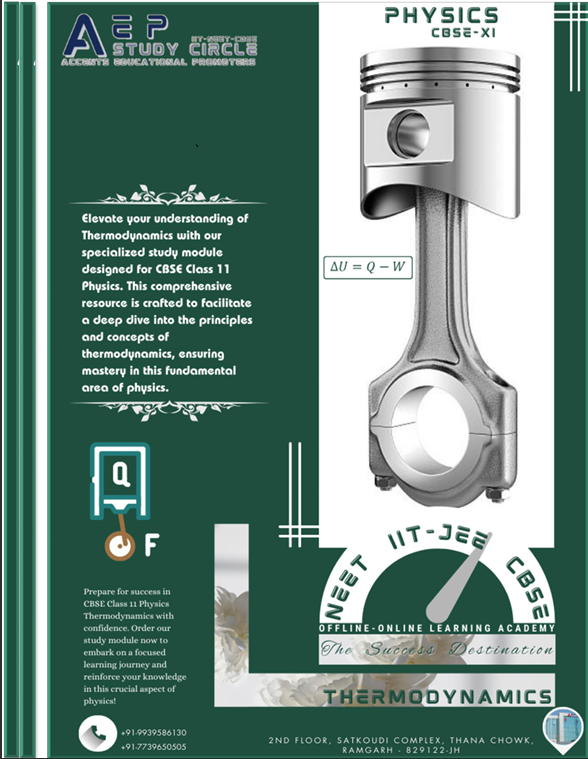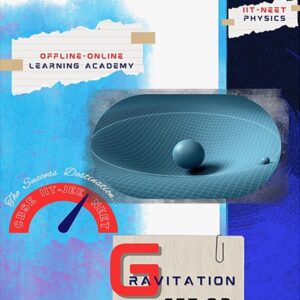A E P- PHY=U-08-CH-02- T H E R M O D Y N A M I C S

Creating study materials for an online shop focused on thermodynamics involves developing content that is educational, engaging, and user-friendly. Here’s a breakdown of potential study materials:
1. **E-Books or PDF Guides:**
– Comprehensive e-books or PDF guides covering key thermodynamics concepts, laws, and applications.
– Well-organized with chapters, sections, and summaries for easy navigation.
2. **Video Lectures or Tutorials:**
– Interactive video lectures or tutorials explaining complex topics in a visual manner.
– Use animations, diagrams, and real-world examples to enhance understanding.
3. **Practice Quizzes and Problems:**
– Interactive quizzes with multiple-choice questions or problem-solving exercises.
– Immediate feedback to reinforce learning and identify areas for improvement.
4. **Flashcards:**
– Digital flashcards summarizing important definitions, formulas, and concepts.
– Useful for quick review and self-assessment.
5. **Infographics and Diagrams:**
– Visual aids like infographics and diagrams to simplify complex thermodynamic processes.
– Clear visuals enhance comprehension and memory retention.
6. **Online Courses:**
– Structured online courses with modules covering different aspects of thermodynamics.
– Progress tracking and certificates for completion can motivate learners.
7. **Webinars or Live Sessions:**
– Scheduled live webinars or Q&A sessions with experts to address specific questions or provide additional insights.
– Record and make them available for later viewing.
8. **Case Studies:**
– Real-world case studies demonstrating the application of thermodynamics principles in various industries.
– Illustrate how theoretical knowledge translates into practical scenarios.
9. **Interactive Simulations:**
– Virtual simulations allowing users to experiment with thermodynamic concepts.
– Hands-on experience without the need for physical laboratories.
10. **Discussion Forums:**
– Online forums or discussion boards where learners can interact, ask questions, and share insights.
– Community engagement fosters a collaborative learning environment.
11. **Progress Tracking and Analytics:**
– Built-in tools for learners to track their progress, set goals, and receive personalized recommendations.
– Analytics for administrators to understand user engagement and improve content.
12. **Mobile-Friendly Design:**
– Ensure that all study materials are accessible and user-friendly on various devices, including smartphones and tablets.
– Responsive design for a seamless learning experience.
13. **Additional Resources:**





Reviews
There are no reviews yet.